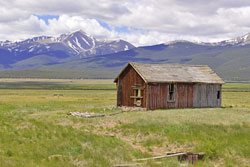 Country wisdom is the collection of practical experiences gained by generations of pioneers, farmers, and ranchers as America transformed from a vast frontier to the world’s greatest economy. That experience – the result of constant trial and error – was passed from parent to child in plain language that left no room for misinterpretation. Living on a farm or ranch miles from the nearest neighbor meant solving problems on your own, making do with the materials around you, and accepting whatever happened and moving on.
Country wisdom is the collection of practical experiences gained by generations of pioneers, farmers, and ranchers as America transformed from a vast frontier to the world’s greatest economy. That experience – the result of constant trial and error – was passed from parent to child in plain language that left no room for misinterpretation. Living on a farm or ranch miles from the nearest neighbor meant solving problems on your own, making do with the materials around you, and accepting whatever happened and moving on.
Country people know that worry is like riding a rocking horse – it’s something to do, but gets you nowhere. Excuses and explanations count for little if the seed is not in the ground by the spring rains to make a crop. You don’t blame the cow when the milk gets sour, but change the pasture where she eats.
Country Sayings to Invest By
The wisdom gained over years of self-reliance in a lonely, often hostile environment remains just as applicable today in our modern, urban setting as at the turn of the century. The lessons of a country life – expressed in simple, understandable language – are especially pertinent for a beginning or inexperienced investor seeking to negotiate a confusing, constantly changing terrain of potential investments and prices. The following country proverbs are tested and true bits of wisdom you can apply equally to your investments and your life.
1. “The Quickest Way to Double Your Money Is to Fold It Over and Put It In Your Pocket”
Everyone expects to make money in the stock market, but few have realistic expectations of probable returns. Inexperienced investors frequently buy stocks on the advice of acquaintances or friends who brag about their experiences, implying that investment success is easy.
Everyone expects to buy the next Apple or Microsoft, allowing them to retire at age 30 or 35. However, doubling your money in a single year is highly unlikely, and becoming wealthy overnight a pipe dream for most people.
Here are two keys to stock market success and long-term financial independence:




